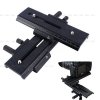It won't actually be used for tiles 
It's for small bits of stone. If you imagine slicing up geodes & agates, that's the sort of thing.
I'll be using a fine disc designed for the job, 110 to 150mm disc machine would be about the right size.
The specialist "lapidary" machines tend to be still expensive like they were 20 years ago, when tiles saws were also expensive, but the latter have tumbled in price.
Here are some in the US, all Out Of Stock, http://www.therockshed.com/equipment4.html
I'd value something relatively quiet, and very low on vibrations. It would have synchronous motor, not something with a brush/"universal" motor which makes a racket like an electric drill or an angle grinder.
Some apparently spray water all over the place which could be annoying, but I could get over it..
Some have a large slot to allow for 45º cutting - definitely not wanted.
I'll need to make some fences/clamps to hold my stone - some tables would be better for that than others.
Recommendations?
Thanks
It's for small bits of stone. If you imagine slicing up geodes & agates, that's the sort of thing.
I'll be using a fine disc designed for the job, 110 to 150mm disc machine would be about the right size.
The specialist "lapidary" machines tend to be still expensive like they were 20 years ago, when tiles saws were also expensive, but the latter have tumbled in price.
Here are some in the US, all Out Of Stock, http://www.therockshed.com/equipment4.html
I'd value something relatively quiet, and very low on vibrations. It would have synchronous motor, not something with a brush/"universal" motor which makes a racket like an electric drill or an angle grinder.
Some apparently spray water all over the place which could be annoying, but I could get over it..
Some have a large slot to allow for 45º cutting - definitely not wanted.
I'll need to make some fences/clamps to hold my stone - some tables would be better for that than others.
Recommendations?
Thanks



